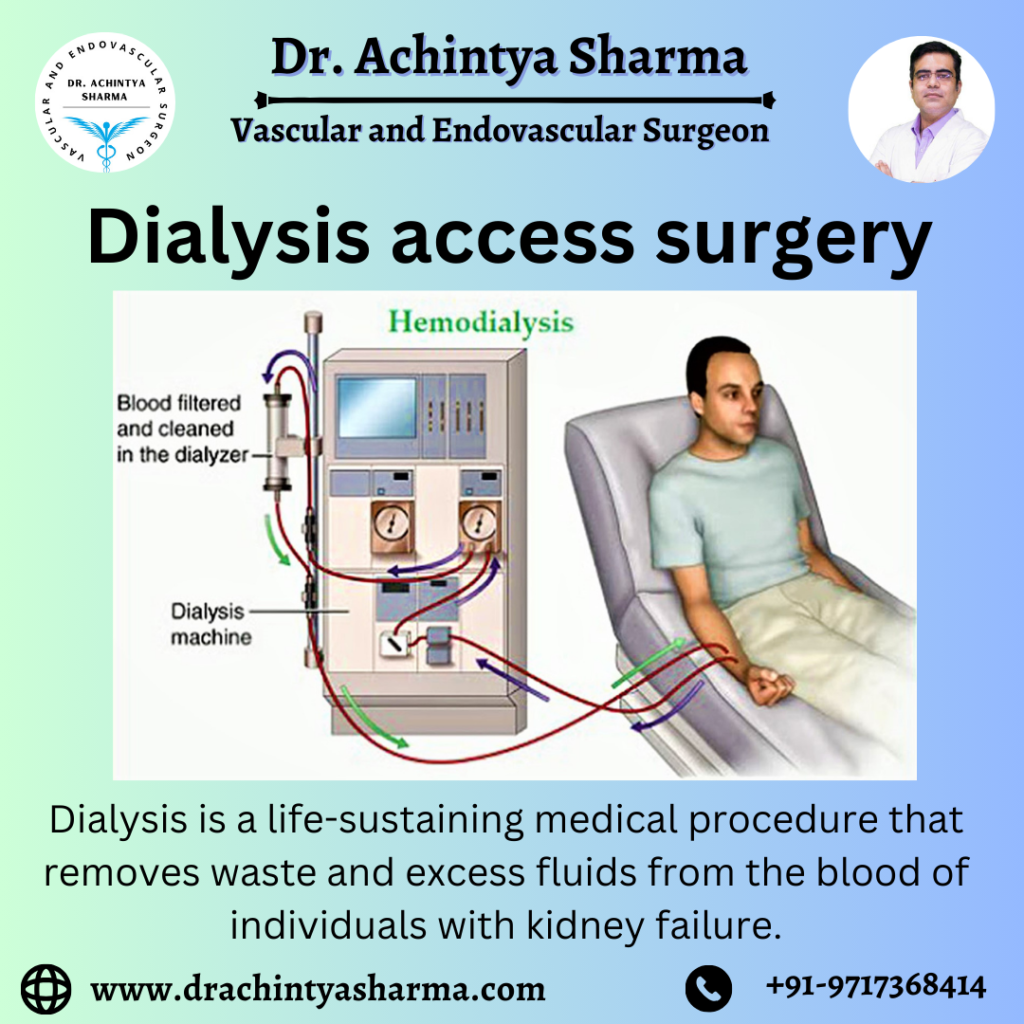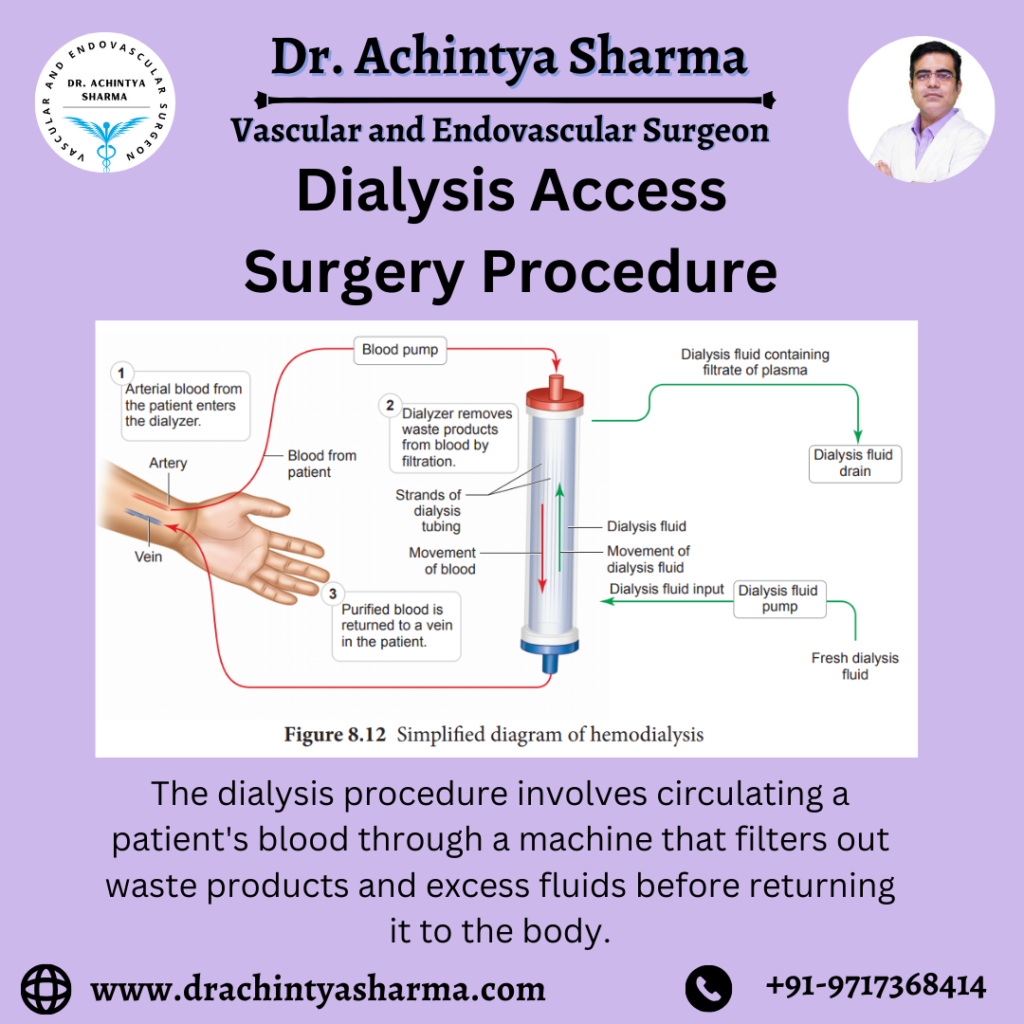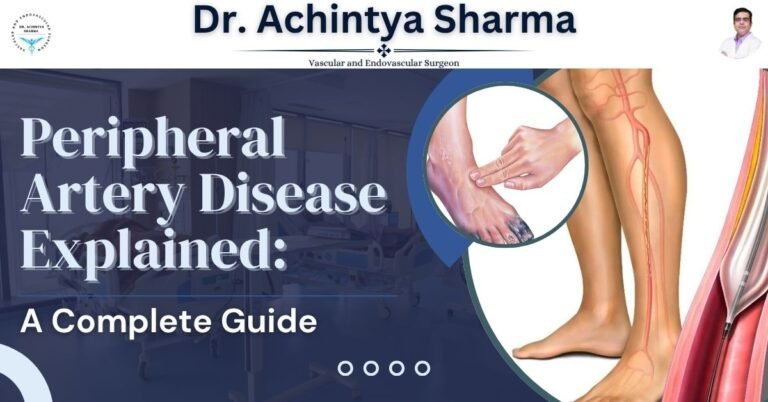Dialysis is a crucial lifeline for individuals grappling with kidney disease, offering a means to filter toxins and excess fluid from the bloodstream when their kidneys can no longer carry out this vital function. This comprehensive guide delves into the intricate realm of Dialysis access surgery, aiming to enhance the comprehension of this pivotal treatment, whether you are a patient or a healthcare practitioner.
Kidney disease can profoundly impact a person’s well-being, underscoring the crucial and life-altering role of dialysis as an intervention. This process serves as a lifeline, effectively stepping in for faltering kidneys by maintaining the body’s fluid and waste balance. For those navigating the challenges of kidney failure, dialysis is a lifeline that can provide renewed hope and improved well-being.
Indications and Importance of Dialysis Access Surgery
Kidney disease is a prevalent health problem worldwide, with millions of people relying on dialysis to survive. Dialysis is a medical procedure that helps remove waste and excess fluid from the bloodstream. Kidneys play a vital role in removing waste and excess fluid from our body. When the kidneys are no longer able to perform this function then dialysis surgery is the first step in enabling this process. This access so that the blood can be safely and efficiently redirected through the dialysis machine is usually created through surgical procedures tailored to the Patient’s specific needs.

Types of Dialysis Access
Surgical procedures for establishing dialysis access present various choices, with each one customized to suit the unique requirements of a patient. These options encompass arteriovenous fistula (AVF), arteriovenous graft (AVG), and central venous catheter (CVC).
1. Arteriovenous Fistula (AVF):
Arteriovenous fistulas are the preferred option for Dialysis access surgery. These include connecting an artery to a vein and creating a natural access point. The gold standard for long-term dialysis access is an AVF due to its durability and low risk of complications.
2. Arteriovenous Graft (AVG):
Synthetic tubes are used when AVF is not possible due to small or weak blood. Vessels The tube connects an artery and a vein and is suitable for needle insertion. Although grafts are a suitable alternative, they are generally less durable than AVFs and may require more maintenance.
3. Central Venous Catheters (CVC):
Central venous catheters are often used as temporary dialysis access They are inserted through a large vein in the neck, chest, or groin. thereby providing immediate access to Dialysis. These are generally used when immediate access is needed or.Wwhen other options are not suitable.

Surgical procedure for accessing dialysis
Dialysis surgery procedure typically begins with a thorough evaluation of the patient’s blood vessels to determine the best access method. The surgical procedure involves creating a connection between an artery and a vein. For example an AVF is created by directly connecting an artery and a vein. AVGs, on the other hand, use a synthetic tube to connect the two, which ensures that blood flows adequately into the dialysis machine. Once the type of access is decided, the surgeon will perform the surgery. Dialysis Access Surgery usually performed under local anesthesia and may require an outpatient basis or a short hospital stay, depending on the access method chosen. Central venous catheters are usually a temporary solution. Our blog will provide a step-by-step description of each process, helping you understand what to expect.
Recovery and Maintenance
Recovery is an important phase after dialysis surgery. Patients need to protect and maintain their access site, and proper care can help extend the duration of access. This may include regular checkups with a nephrologist and monitoring for signs of infection or clotting. After the procedure, Patients will be instructed on how to care for their access. Site and monitor for any signs of infection or complications.
conclusion
Dialysis access surgery is an important procedure for individuals suffering from kidney disease, providing them with the means to undergo life-saving dialysis treatment. Understanding the different types of access, procedure, and post-surgery care is essential for patients and health care professionals alike. With the right knowledge and support, people requiring dialysis can continue to live full lives despite the challenges of kidney disease. The purpose of this article is to highlight the importance of dialysis surgery and to empower individuals with the knowledge needed to navigate this important aspect of their healthcare journey.




